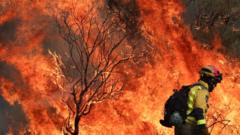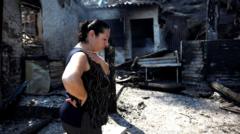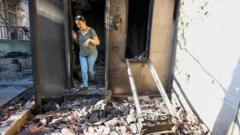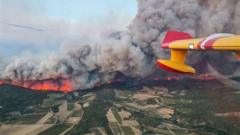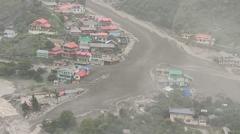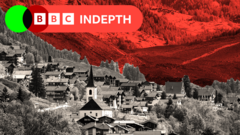Authorities have issued air quality warnings in the Upper Midwest due to smoke from Canadian wildfires, affecting numerous states and urging vulnerable populations to take precautions.
Smoke from Canadian Wildfires Affects Air Quality in Upper Midwest
Smoke from Canadian Wildfires Affects Air Quality in Upper Midwest
Wildfires in Canada are sending smoke into the U.S., prompting air quality alerts across Michigan, Wisconsin, and Minnesota.
The smoke from wildfires raging in Canada is drifting into the U.S., prompting air quality warnings across the Upper Midwest as officials caution residents about potential health hazards. On Friday, advisories were issued in Michigan, Wisconsin, and Minnesota, recommending that certain groups minimize outdoor activities due to elevated particulate pollution levels resulting from the wildfires.
Meteorologists in Michigan's Department of Environment, Great Lakes and Energy noted that the concentration of fine particulates in the air would remain high through Saturday morning. People in sensitive demographics, including those with heart or lung conditions, older adults, children, pregnant individuals, and outdoor workers, were specifically advised to take care when exposed to the smoke.
In regions of Canada, particularly in Manitoba, wildfires have caused considerable devastation, including fatalities and mass evacuations. The wildfire season typically spans from March to October, with an increase in activity seen in May. Currently, Saskatchewan and Manitoba are grappling with numerous out-of-control wildfires that have forced thousands of residents from their homes.
As a cold front moves southward, smoke is being carried into Minnesota and nearby tribal nations. The Minnesota Pollution Control Agency reported alarming air quality levels, indicating that conditions were "unhealthy" for a substantial segment of the population, with readings moving into the red category on the air quality index. The agency anticipates ongoing smoke waves, with the most severe pollution expected to continue into Saturday afternoon.
Wisconsin's Department of Natural Resources has reported the likelihood of hazy skies and high levels of fine particulate matter moving into the northwestern region of the state. While the official advisory may expire early Saturday morning, officials warn that heightened pollution levels may persist in certain areas, possibly reaching unhealthy thresholds for a larger population.
Meteorologists foresee this event as a prolonged issue with multiple waves of smoke anticipated, causing continuing challenges for residents in the affected states and beyond.
Meteorologists in Michigan's Department of Environment, Great Lakes and Energy noted that the concentration of fine particulates in the air would remain high through Saturday morning. People in sensitive demographics, including those with heart or lung conditions, older adults, children, pregnant individuals, and outdoor workers, were specifically advised to take care when exposed to the smoke.
In regions of Canada, particularly in Manitoba, wildfires have caused considerable devastation, including fatalities and mass evacuations. The wildfire season typically spans from March to October, with an increase in activity seen in May. Currently, Saskatchewan and Manitoba are grappling with numerous out-of-control wildfires that have forced thousands of residents from their homes.
As a cold front moves southward, smoke is being carried into Minnesota and nearby tribal nations. The Minnesota Pollution Control Agency reported alarming air quality levels, indicating that conditions were "unhealthy" for a substantial segment of the population, with readings moving into the red category on the air quality index. The agency anticipates ongoing smoke waves, with the most severe pollution expected to continue into Saturday afternoon.
Wisconsin's Department of Natural Resources has reported the likelihood of hazy skies and high levels of fine particulate matter moving into the northwestern region of the state. While the official advisory may expire early Saturday morning, officials warn that heightened pollution levels may persist in certain areas, possibly reaching unhealthy thresholds for a larger population.
Meteorologists foresee this event as a prolonged issue with multiple waves of smoke anticipated, causing continuing challenges for residents in the affected states and beyond.


